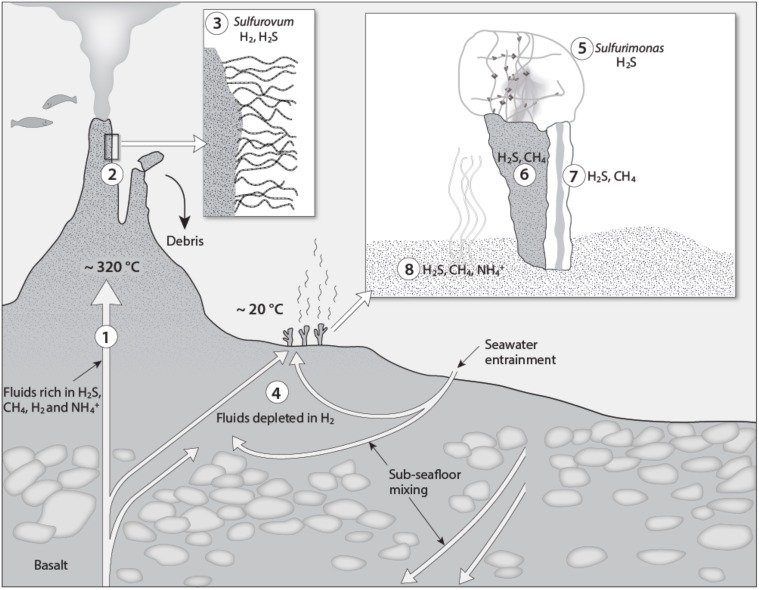Figure 4.
A conceptual biogeochemical model of the Loki's Castle Vent Field. (1) The high-temperature vent fluid is characterized by high CH4, H2, and concentrations in addition to H2S (Pedersen et al., 2010). (2) The H2S, H2and CH4 support growth of Epsilonproteobacteria of the genera Sulfurimonas and Sulfurovum and gammaproteobacterial Methylococcales, respectively, in biofilms covering the black smoker chimneys (Dahle et al., 2013, 2015). (3) Sulfurovum forms large filamentous structures with sheaths of a heat resistant biopolymer (Stokke et al., 2015). (4) Subsurface mixing with percolating seawater and associated geochemical and microbial processes lead to sulfate reduction (Eickmann et al., 2014) and depletion of H2 in the low-temperature fluids discharged in the barite field. H2S in the diffuse venting fluids in the barite field supports microorganisms in the microbial mat on top of the barite chimneys (5), in the chimney exterior (6), interior (7), and in the hydrothermal sediment (8). CH4 supports microorganisms in the sediment and in the chimney interior and exterior, whereas may be utilized in the surface sediment densely colonized by the tubeworm Sclerolinum contortum (Kongsrud and Rapp, 2012). The moderate fluid flow through the barite chimneys support biofilms of Sulfurimonas (5) forming delicate networks of single cells interconnected with EPS.

